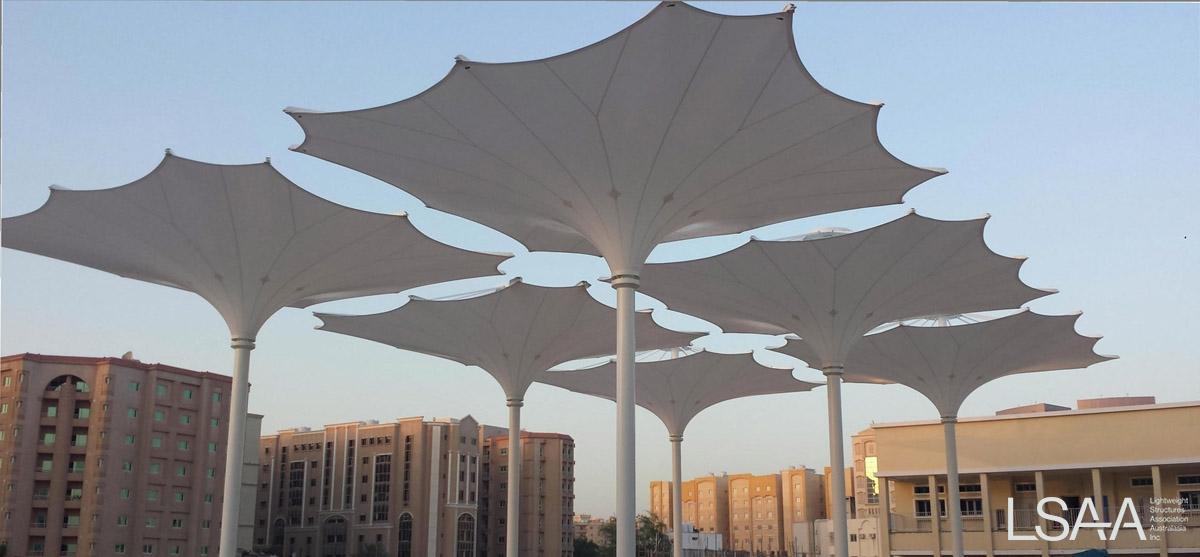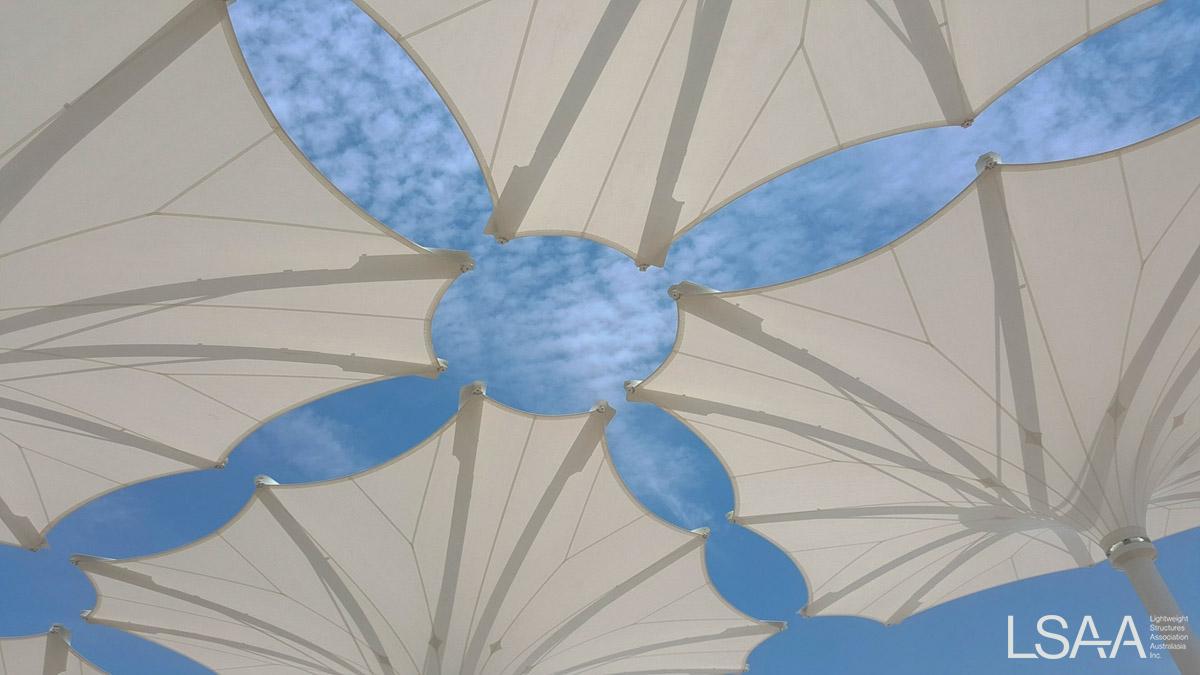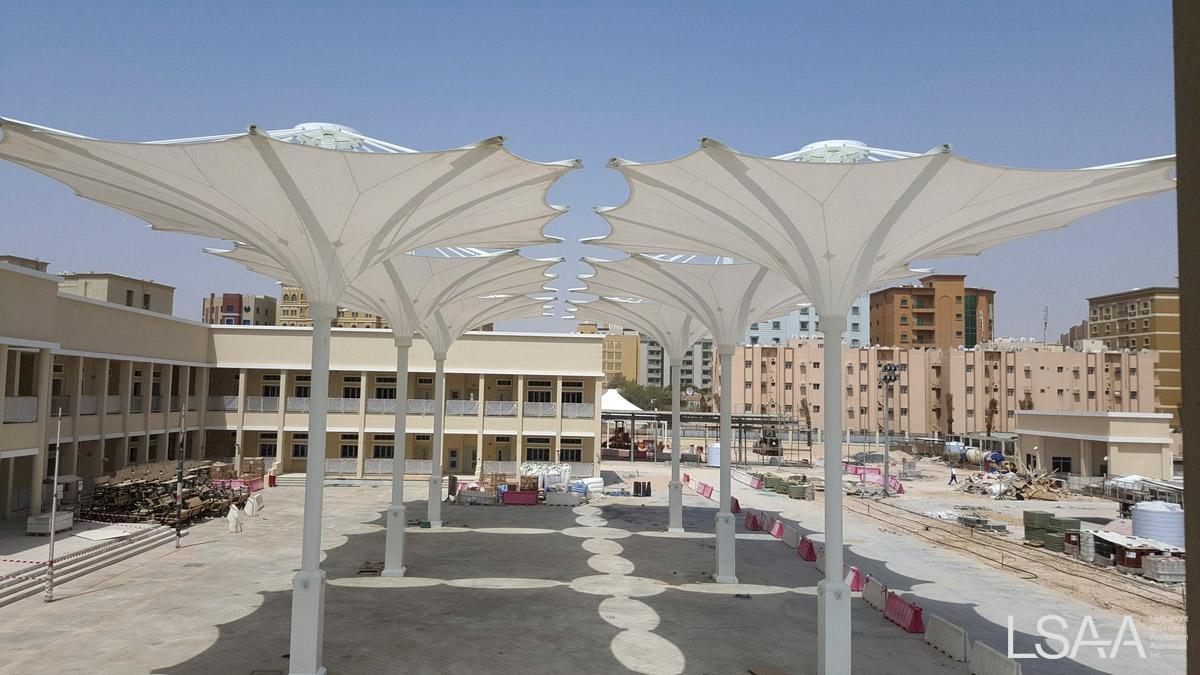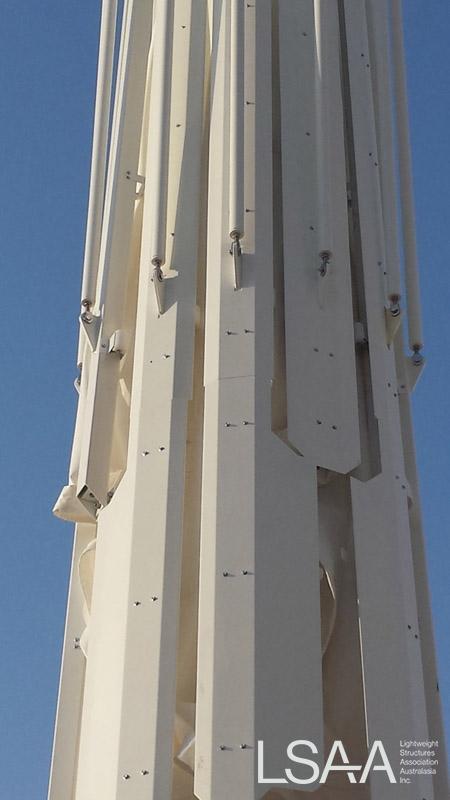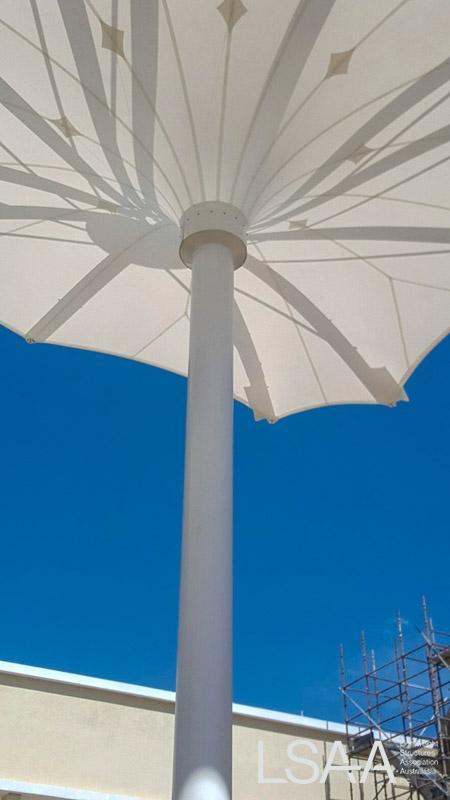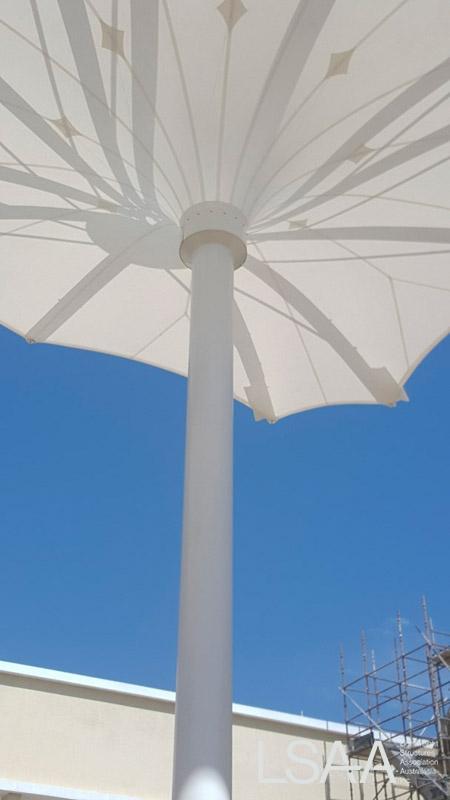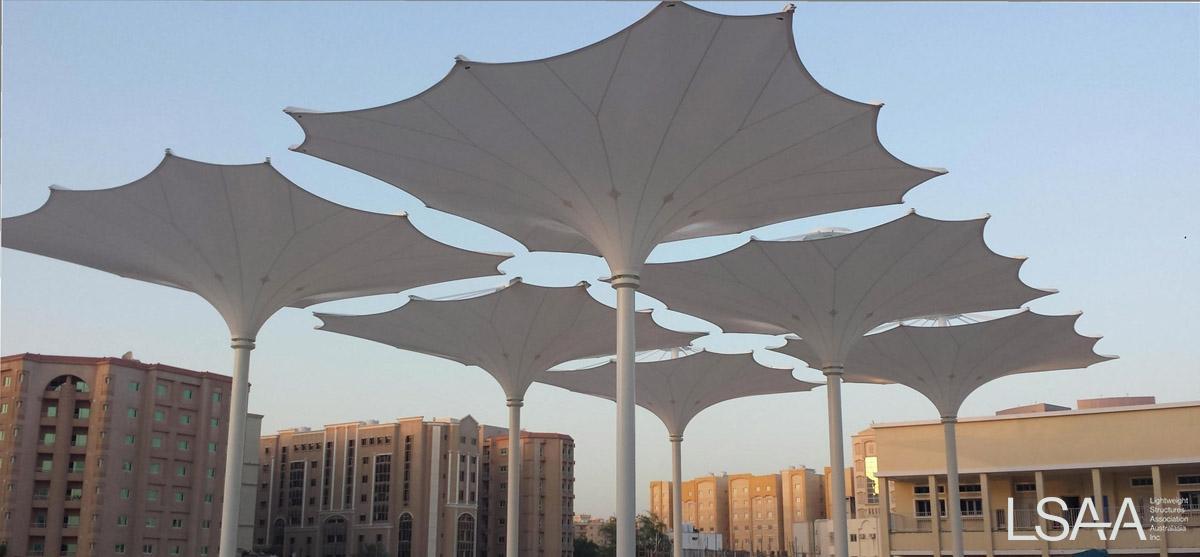Project entered in the LSAA 2016 Design Awards (Cat 7, 4772)
Tarek Automated Retractable Umbrellas
Entrant: MakMax Australia (Engineer, Fabricator, Installer)
Location: Al Sadd Doho, Qatar. Completed: February 2016 Client: Taiyo Middle East
Team: Peter Kamols, Robert McDonald, Mike Lester MakMax Australia
Application Shade structures for an Educational Facility
Description
The client requested an architectural solution for the provision of shade within an educational facility. The emphasis was placed on providing an innovative design that could be easily retracted as required.
Design Brief
This project required the development and manufacture of a hydraulic powered system that would enable easy retraction of the six umbrellas (either in a group or individually).
Structural Systems
Given the structures are collapsible and use a wind sensor to control the retraction and deployment, it offered a unique opportunity to design the structures according to a sensible wind load instead of the local design wind load.
Therefore the structures were designed to a 100km/hr gust wind, but the retraction process is set to start at a much lower wind speed in order to fully retract prior any storm event reaching that wind speed. In their retracted state the structures are designed for the full local wind loading and have bespoke shrouds that conceal and protect the membrane in its collapsed, untensioned state.
The defining geometry is a product of the retraction and deployment process – the structures range of motion could not overstress any components at any stage. Discovering this geometrical solution is a multistep process using a multitude of software.
Materials
The fabric used for the umbrellas was a SEEFAR 4T20HF - a PVC coated PTFE
The fabric used for the umbrellas was a SEEFAR 4T20HF - a fluoropolymer coated woven PTFE which was to client specification.
Fabrication
These structures, employed a wide range of disciplines inclusive of steel, membrane, cable, electronic and hydraulic.
As the structures integrated a significant number of disciplines and materials, the tolerances and methods of fabrication for many components were quite stringent. For example, as the geometry of the steelwork needed to be precise through the full range of motion (from collapsed through to deployed), the standard steel welded connections were not able to be fabricated within tolerance, so alternative detail connections were devised that allowed for each strut to be individually adjusted to suit during installation.
Collaboration, Construction and Maintenance
As a product of the multidisciplinary fields it was necessary to have all parties involved in the design and muck up processes. The integration of the hydraulic systems with the steel mechanisms were critical to the performance of the structures so a full scale mockup was produced and erected at the MakMax factory in Eagle Farm for testing. The hydraulic contractors were on site to undergo the testing of the systems to ensure that the structures retracted and deployed correctly throughout.
This mockup testing also trialed the erection sequence and resulted in some adjustments to the structures for ease of construction on site. Once resolved the construction sequence was not too dissimilar to regular structures, except for the on site testing of the mechanisms and the refinement of the adjustable elements within the structures.
Ongoing maintenance for these structures is a major element affecting the service life of the structures. Although the components themselves are hardy and able to withstand the elements, a wide range of issues can possibly arise due to the many disciplines employed in the structures. Therefore a rigorous maintenance schedule around the electronics, hydraulics and structural components is required to ensure they operate properly.
Ref: sliders/DA2016/Cat7/4772
